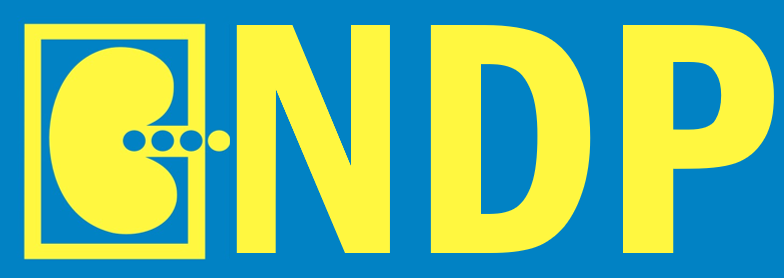- Polish Nephrology and Dialysis | official journal of the Polish Society of Nephrology
Genetic variants of the renin-angiotensin system and cardiovascular disease in peritoneal dialysis patients *
Clinical practice guidelines on diagnosis and treatment of hyponatraemia
7 May 2021Assessment of the risk of bone fractures in patients with end-stage renal disease undergoing dialysis – a prospective observational study
10 May 2021Genetic variants of the renin-angiotensin system and cardiovascular disease in peritoneal dialysis patients *
Andrzej KSIĄŻEK*
Wojciech ZAŁUSKA
Monika BURACZYŃSKA
Department of Nephrology, Medical University of Lublin, Lublin, Poland
Chair: Prof. Andrzej Książek, M.D., Ph.D., Dr h.c. mult.
Warianty genów układu renina-angiotensyna i choroby układu sercowo-naczyniowego u pacjentów leczonych dializą otrzewnową
Śmiertelność wśród pacjentów ze schyłkową niewydolnością nerek (ESRD) jest bardzo wysoka, co spowodowane jest głównie chorobami układu sercowonaczyniowego (CVD). Warianty genetyczne genów układu renina-angiotensyna, enzymu konwertazy angiotensyny I (ACE), angiotensynogenu (AGT) i receptora typu 1 angiotensyny II (AT1R), są uznanymi kandydatami w chorobach układu sercowo-naczynioego. Celem niniejszego badania była ocena roli wymienionych polimorfizmów w CVD u pacjentów dializowanych otrzewnowo. Badano 80 pacjentów dializowanych otrzewnowo, ze zdiagnozowaną chorobą układu krążenia i 80 pacjentów bez objawów chorób układu krążenia. W DNA pacjentów oznaczano genotypy polimorfizmów genów ACE, AGT i AT1R metodą reakcji łańcuchowej polimerazy (PCR) i analizy z endonukleazami restrykcyjnymi. Częstości genotypów i alleli były podobne u pacjentów z CVD i pacjentów bez CVD. Analizowano kombinacje alleli ryzyka badanych polimorfizmów. Genotypy z allelami ryzyka dwóch polimorfizmów, ACE i AT1R, obserwowano u 27 % pacjentów z CVD, a z
allelami ryzyka AT1R i AGT u 24 % pacjentów z CVD. Oba allele, ACE D i AGT T, obserwowano u 72 % pacjentów z chorobami układu sercowo-naczyniowego. Ta kombinacja alleli ryzyka była obecna u 46 % pacjentów bez CVD (p < 0.0001). Jest to pierwsze badanie oceniające związek polimorfizmów układu renina-angiotensyna z chorobami układu sercowo-naczyniowego u pacjentów dializowanych otrzewnowo. Równoczesna obecność allelu D polimorfizmu I/D genu ACE i allelu
T polimorfizmu M235T genu AGT może być silnym predyktorem zwiększonego ryzyka wystąpienia CVD u pacjentów leczonych dializą otrzewnową.
(NEFROL. DIAL. POL. 2015, 19, 112-115)
Genetic variants of the renin-angiotensin system and cardiovascular disease in peritoneal dialysis patients *
Mortality rate in end-stage renal disease (ESRD) patients is very high, due mainly to cardiovascular disease (CVD). Genetic variants of the renin-angiotensin system genes, angiotensin I – converting enzyme (ACE), angiotensinogen (AGT)
and angiotensin II type 1 receptor (AT1R) are established candidates in CVD . The purpose of our study was to evaluate role of these polymorphisms in CVD in peritoneal dialysis (PD) patients. We examined 80 PD patients diagnosed with
CVD and 80 PD patients without any symptoms or signs of CVD. Patients were genotyped for the ACE, AGT and AT1R polymorphisms by polymerase chain reaction (PCR), followed by restriction enzyme analysis. The genotype and allele
frequencies were similar in PD patients with CVD and those without CVD. We analyzed combinations of risk alleles of studied polymorphisms. Genotypes with risk alleles of both ACE and AT1R polymorphisms were found in 27 % of patients
with CVD, and with the risk alleles of both AT1R and AGT in 24 % of CVD patients. Both ACE D allele and AGT T allele were observed in 72 % of CVD patients. This combination of alleles was present in 46 % of patients without CVD (p < 0.0001).
This is the first study to evaluate the impact of the renin-angiotensin system gene polymorphisms on CVD in PD patients. The simultaneous presence of D allele of ACE I/D polymorphism and T allele of AGT M235T polymorphism might be a strong predictor of a higher risk of developing CVD in dialyzed patients.
(NEPROL. DIAL. POL. 2015, 19, 112-115)
